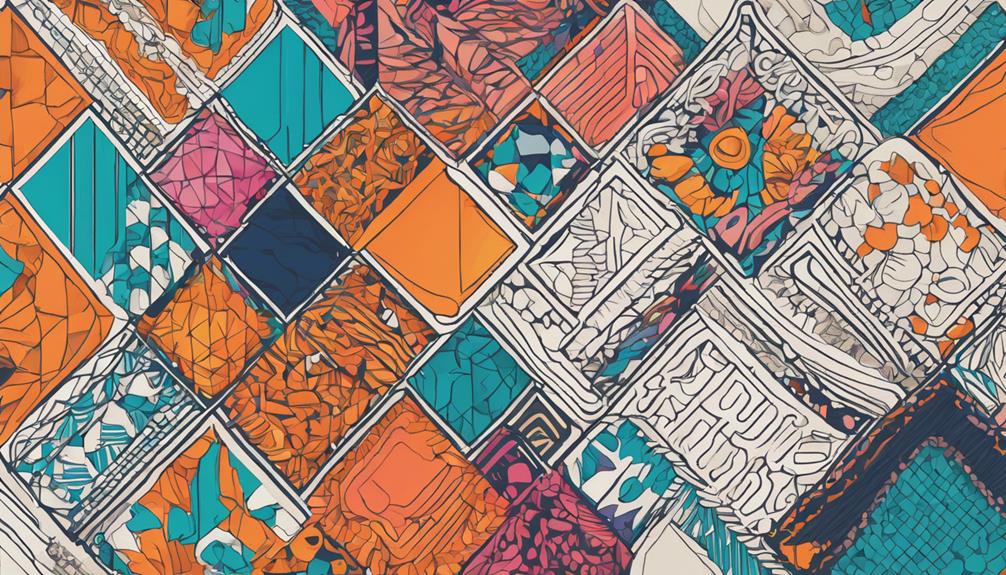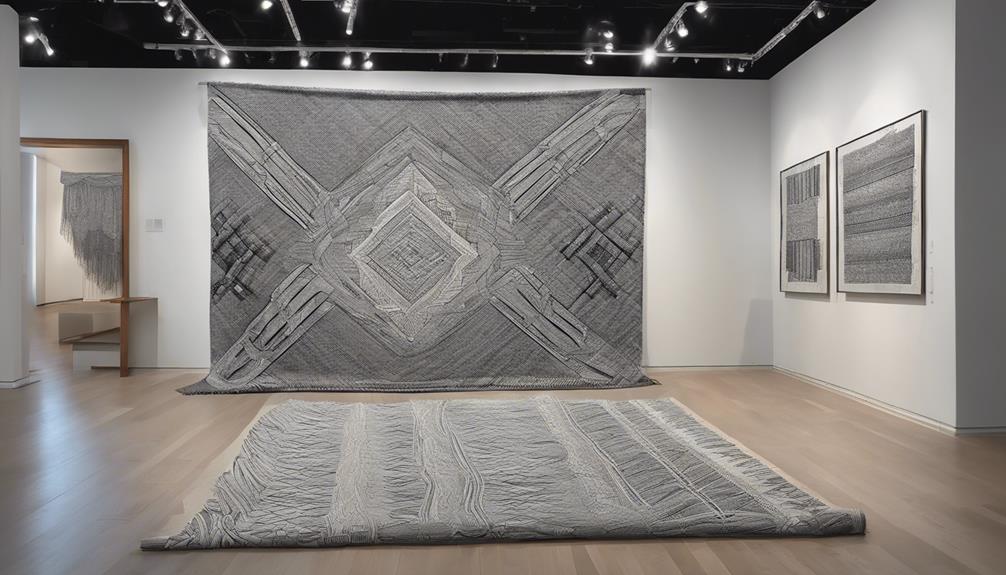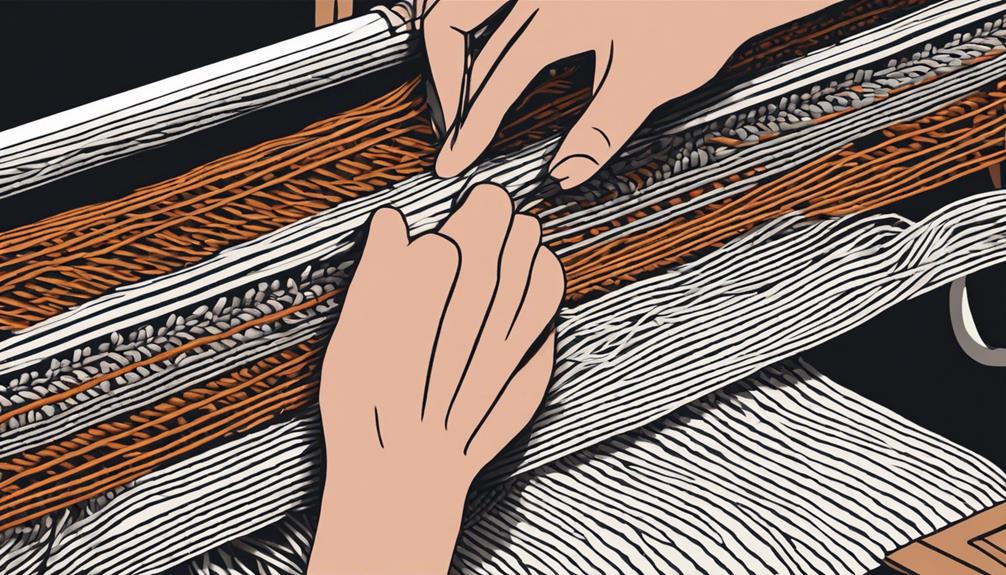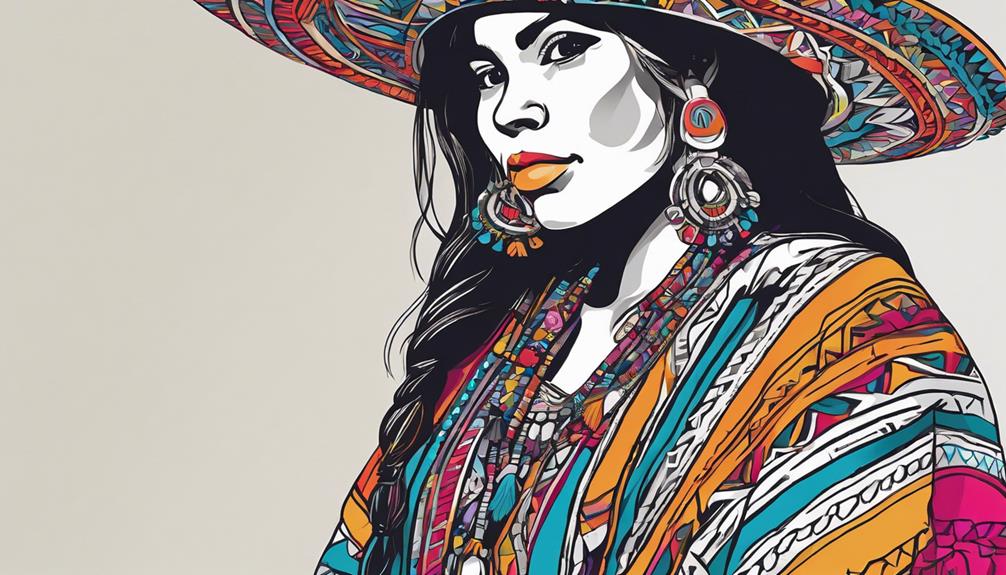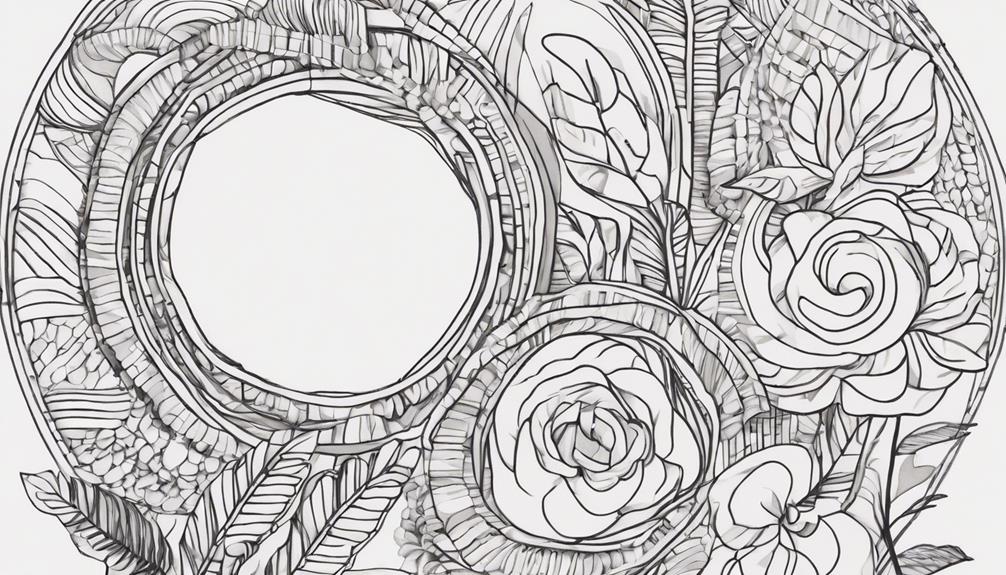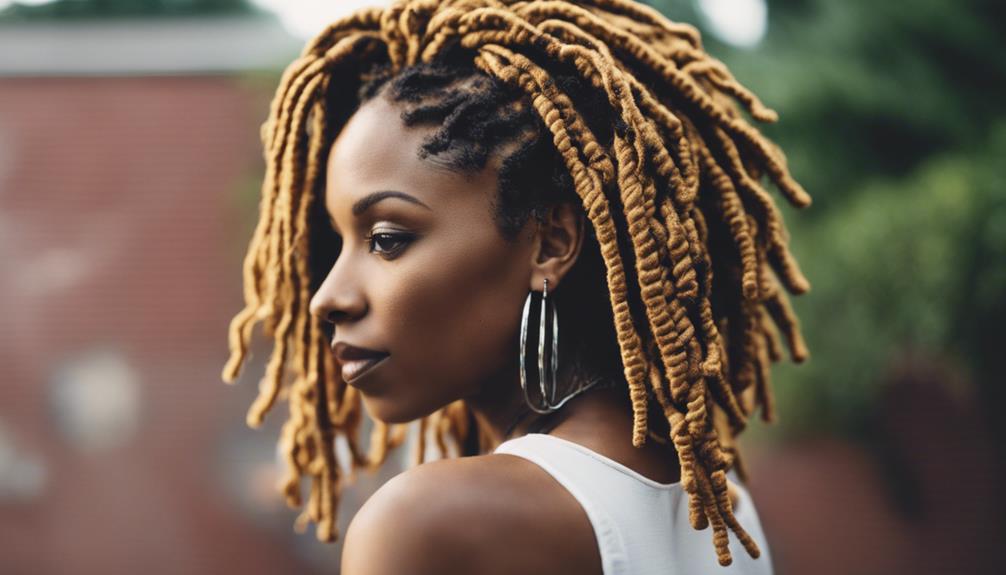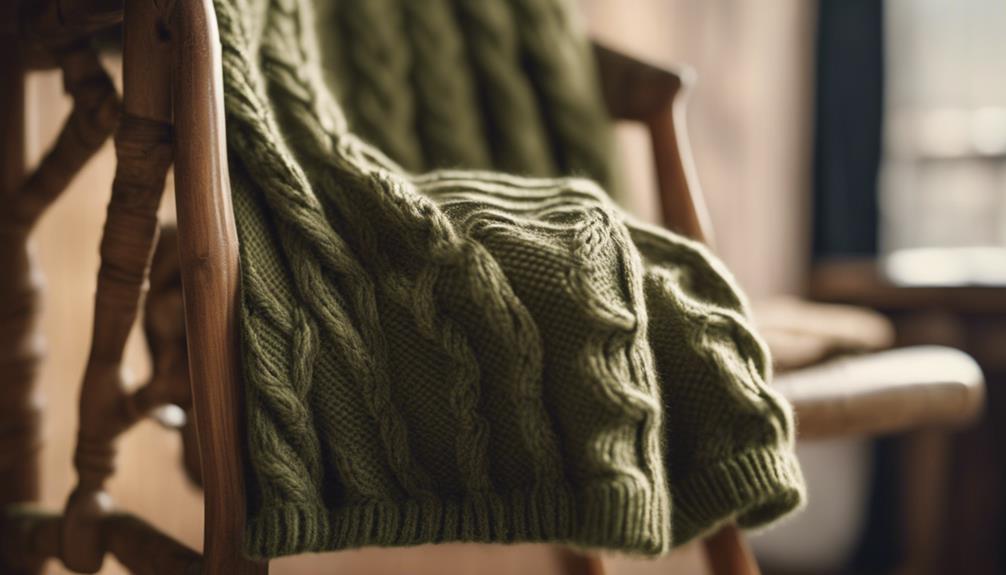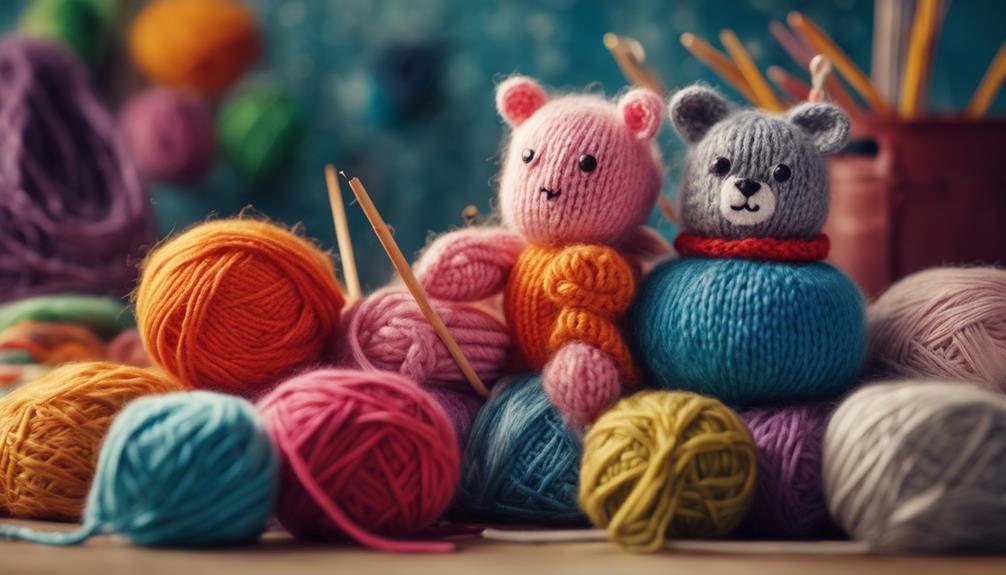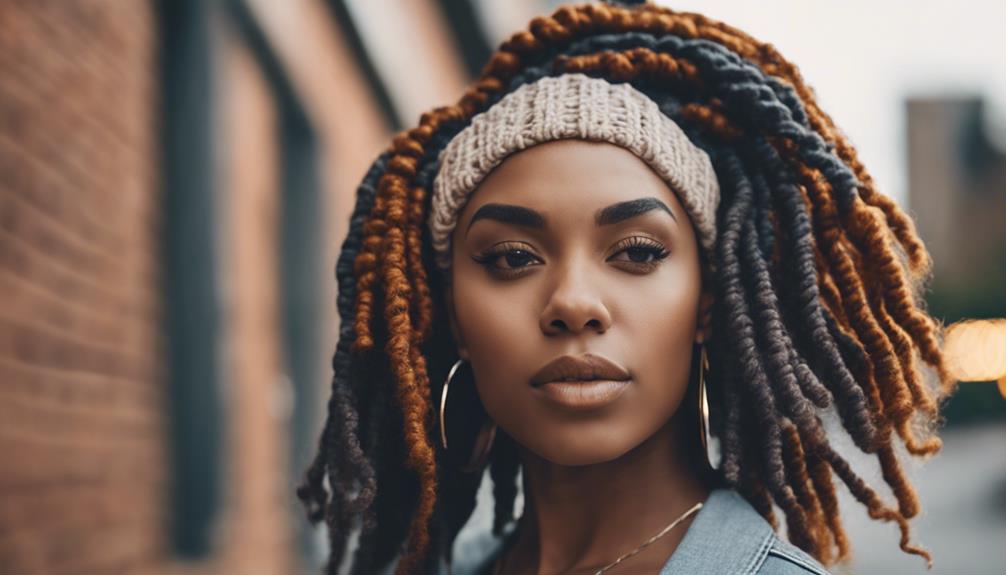Immerse yourself in the world of textile art, where fabric serves as your canvas for creativity. Delve into weaving, knitting, crocheting, embroidery, and quilting techniques to craft stunning pieces. Learn how color theory can elevate your storytelling. Utilize upcycled materials for one-of-a-kind projects and select premium supplies for impressive outcomes. Immerse yourself in a realm where art and craft converge, shaping a fresh cohort of artists. Uncover the dynamic relationship between traditional origins and contemporary influences, forming a tapestry rich in heritage and innovation. Enhance your expertise in textile art through exploration of techniques, tricks, and inspirational artworks.
Key Takeaways
- Fabric is the primary medium in textile art, using techniques like weaving, knitting, and embroidery.
- Color theory is crucial for evoking emotions and narratives in textile art.
- Upcycling materials is common in textile art projects for sustainability.
- Quality supplies are essential for impactful textile art pieces.
- Influential figures like Anni Albers and Ann Sutton shape the field of textile art.
Textile Art Overview
Textile art offers an alluring blend of tradition and innovation, showcasing a diverse range of techniques and styles that have evolved over centuries. Fabric serves as the primary medium in textile art, with artists exploring various techniques such as weaving, knitting, crocheting, embroidery, and quilting to create stunning pieces of art.
Color theory plays a pivotal role in textile art, allowing artists to evoke emotions and convey narratives through the strategic use of colors.
When creating textile art projects, artists often upcycle materials to give new life to old fabrics, incorporating sustainable practices into their work. Choosing the right supplies is essential in textile art, as the quality of materials can greatly impact the final piece.
Key Figures in Textile Art
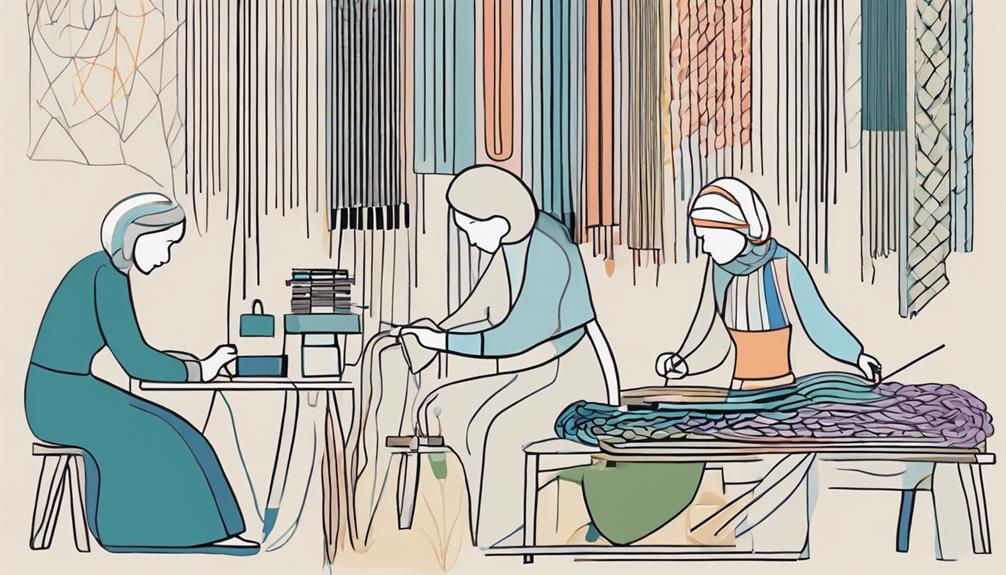
You'll explore influential textile artists who've shaped the field and understand the contrast between modern and traditional influences.
These key figures have left a lasting impact on the evolution of textile art, inspiring a new generation of artists to push boundaries and redefine the relationship between art and craft.
Get ready to discover how these artists have redefined the boundaries of textile art through their innovative techniques and creative vision.
Influential Textile Artists
In the world of influential fabric artists, Anni Albers stands out as a pivotal figure who transformed the intersection of art and craft through her innovative use of materials and techniques. Albers' book and reference resources have inspired countless artists to explore new horizons in fabric art.
Her workshop photos showcase her mastery of techniques and projects, illustrating the depth of her understanding of color theory and material manipulation. Additionally, Albers' emphasis on upcycling materials and utilizing sustainable supplies has had a lasting impact on the fabric art community.
Another notable figure in the domain of fabric art is Ann Sutton, a contemporary artist who pushes the boundaries of traditional techniques. Sutton's work explores the intricacies of color, texture, and form, challenging conventional notions of fabric art.
Through their pioneering approaches, Albers and Sutton have paved the way for a new generation of artists to experiment and innovate in this dynamic field.
Modern Vs. Traditional Influences
Modern and traditional influences collide in the world of textile art, showcasing a dynamic interplay between key figures who redefine boundaries and challenge conventions. Anni Albers stands out for revolutionizing textile art by merging art and craft with innovative materials and techniques, paving the way for contemporary textile artists like Ann Sutton. Sutton, a prominent figure in the field, blurs the lines between art and craft, exploring color, texture, and form in unique ways.
Both modern and traditional influences can be seen in textile art, with examples like Amish quilts and modern art sharing design similarities such as geometric patterns and bold colors. These influences highlight the enduring influence of traditional practices in the work of contemporary artists.
Textile art, with its rich history dating back thousands of years, continues to evolve as modern artists draw inspiration from traditional craftsmanship, creating a vibrant and diverse artistic landscape.
Traditional Vs. Modern Textile Art
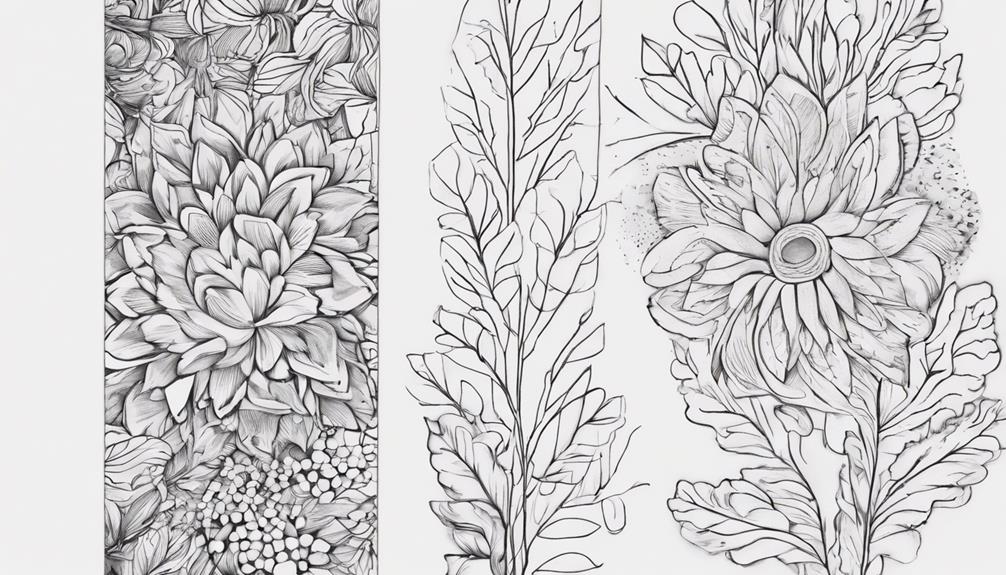
Traditional textile art, such as Amish quilts, showcases geometric patterns and bold colors that have influenced modern artists with their exquisite craftsmanship.
In contrast, modern textile art explores innovative materials and techniques, blurring the boundaries between traditional definitions of art and craft. This evolution reflects the changing landscape of textile art, where artists push the limits of what's considered traditional.
The evolving nature of textile art is evident in how artists now use the medium to address significant issues like environmental concerns and gender equality. The intersection of art and craft in textile art has become a focal point for many creators, with pioneers like Anni Albers and Ann Sutton leading the way with their innovative approaches.
As modern textile art continues to evolve, it remains rooted in the craftsmanship and heritage of traditional techniques while embracing new possibilities for creative expression.
Phaidon's Vitamin Series
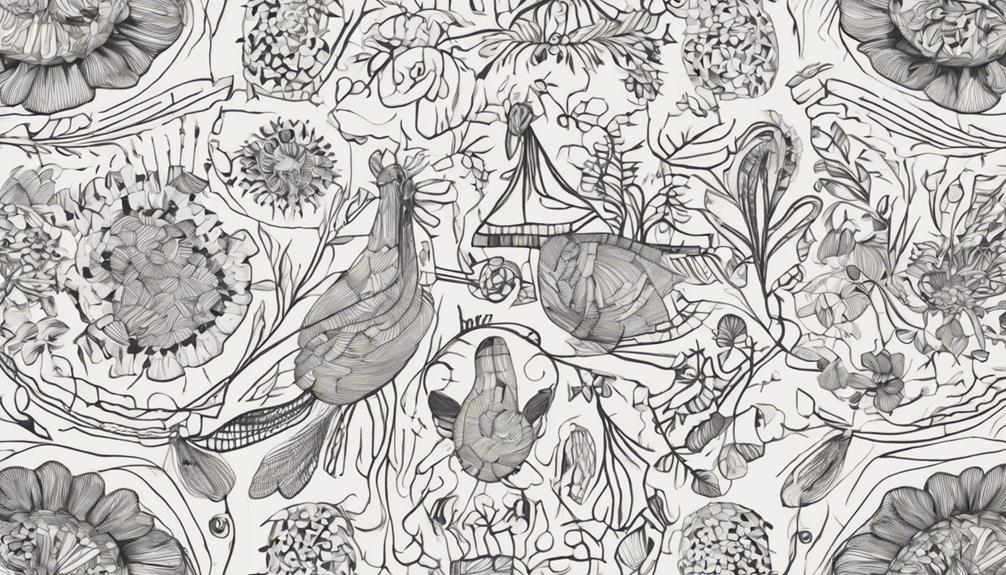
Exploring the modern landscape of visual art mediums, Phaidon's Vitamin Series surveys recent developments in artistic expression through specific mediums. This series delves into how artists engage with particular artistic mediums, shedding light on their significance in the art world. By focusing on mediums like clay, ceramic, painting, drawing, and collage, and with contributions from international curators, critics, and museum directors, Phaidon's Vitamin Series provides an inclusive view of the trends in art and artists' application of diverse mediums.
To give you a better insight, here's a glimpse of Phaidon's Vitamin Series:
| Artistic Mediums | International Curators | Significance in Art |
|---|---|---|
| Clay | Jane Smith | Innovative approaches to sculpture and pottery |
| Painting | Carlos Martinez | Evolution of painting techniques and styles |
| Collage | Anna Chang | Intersection of traditional and digital art |
These books offer an in-depth exploration into contemporary art practices, highlighting the evolving ways artists express their creativity and vision through specific mediums.
Book Reviews and Art Exploration
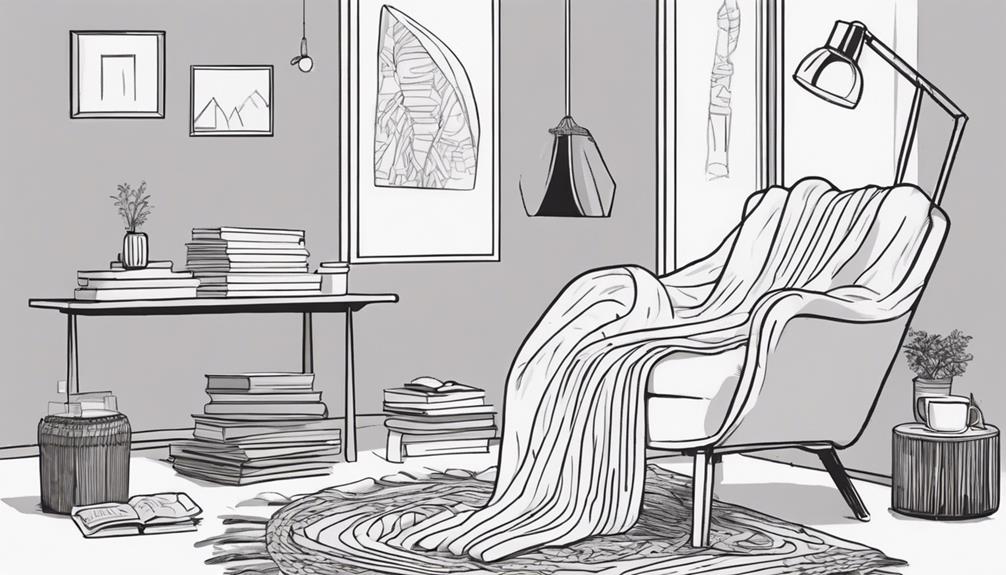
You'll find a wealth of artistic inspiration through textiles and the exploration of different art forms. These book recommendations for artists offer unique perspectives and insights into the world of art.
Set off on inspiring artistic journeys with diverse perspectives and practical advice from these insightful reads.
Artistic Exploration Through Textiles
Exploring the world of textile art through book reviews and art exploration offers a unique opportunity to discover the intersection of creativity and craftsmanship in a dynamic and enriching way. Here's a glimpse of what you can anticipate when immersing yourself in artistic offerings through textiles:
- 'The Fabergé Girl' by Ina Christova transports you to early 20th-century Saint Petersburg, highlighting the exquisite textile artistry of the renowned Fabergé brand.
- 'The Art Lover's Guide to Barcelona' by Ruby Boukabou reveals Barcelona's vibrant cultural heritage through a tapestry of textile art, inviting you to appreciate the city's artistic offerings.
- 'How to Collect Art' by Magnus Resch explores the intricate world of the art market, shedding light on the textile art pieces worth collecting and providing valuable insights for art enthusiasts.
- These books offer a rich tapestry of perspectives on art appreciation, guiding you in engaging with and collecting textile art while revealing its profound artistic significance in the exploration of art.
Book Recommendations for Artists
For artists seeking inspiration and insights into the art world, these carefully selected book recommendations offer a diverse range of perspectives and expertise.
The 'Complete Photo Guide to Textile Art Techniques' is a must-have for any art quilter or textile enthusiast looking to expand their skills. This extensive guide covers everything from color theory to textile art workshops, providing a wealth of information for both beginners and experienced artists.
If you're interested in incorporating recycled materials into your artwork, 'Altered Textile Books: Fabric Art Techniques' is an excellent resource. This book explores the creative possibilities of upcycling and recycling clothing to create unique and visually striking pieces. It's perfect for artists looking to experiment with new methods and materials.
Whether you're a seasoned art collector or just starting to build your collection, 'How to Collect Art' offers valuable insights into the art market and collecting practices. Written by a New York cultural economist, this book provides a fresh perspective on exploring the world of art collecting.
Inspiring Artistic Journeys
Explore mesmerizing artistic journeys and enrich your understanding of art through insightful book reviews and art exploration. Immerse yourself in a world of creativity and inspiration with these compelling reads:
- 'The Fabergé Girl' by Ina Christova: Step into early 20th-century Saint Petersburg and uncover the enchanting world of Fabergé through this historical narrative.
- 'The Art Lover's Guide to Barcelona' by Ruby Boukabou: Discover Barcelona's cultural richness and artistic gems with this guide tailored for art enthusiasts.
- 'How to Collect Art' by Magnus Resch: Gain valuable insights from a cultural economist on navigating the art market and establishing your art collection.
- Art Exploration Revealed: These books not only provide instructions on collecting art but also delve into diverse art scenes, historical contexts, and practical tips for art enthusiasts.
Allow yourself to be transported into different facets of art appreciation and collecting, reinvigorating your textile art journey.
Book Overview
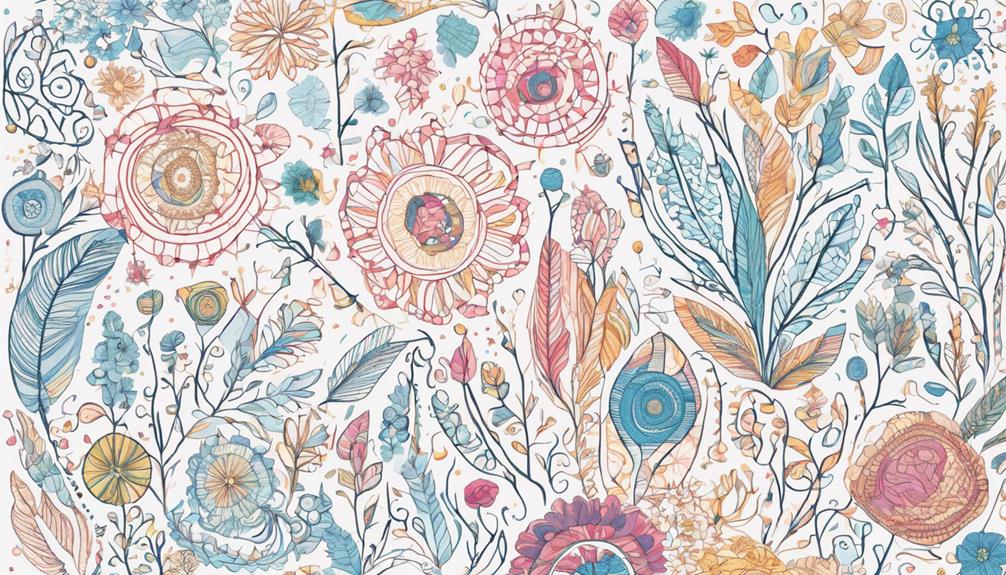
Within the pages of 'Textile Art: The Complete Guide,' you will discover a wealth of knowledge on fabric alteration and embellishment techniques. This book is considered a must-have for sewists and textile artists, offering a marvelous assortment of projects and serving as a great reference book for creating beautiful textiles. The book covers over 40 techniques step by step, allowing you to let your creativity express and explore different ways to transform fabric. Additionally, it provides an introduction to color theory, helping you make informed decisions in your projects. Here is a quick look at what you can expect from this indispensable reference book:
| Highlights | Features | Benefits |
|---|---|---|
| Great reference book | Suggestions for using resources | Best altered textile book |
| Techniques are covered step by step | Intro to color theory | Found new uses |
Recommendations and Reviews

Considered a go-to resource by many in the textile art community, this book has garnered high praise for its user-friendly approach and practical project ideas. If you're a beginning art quilter or someone looking to try something new in the field of textile art, this book is a fantastic choice.
Here's why:
- Received fabric art workshop: The book provides detailed instructions similar to what you'd receive in a fabric art workshop, making it easy to follow along.
- Dozens of ideas using found objects: It showcases several uses for found objects, encouraging you to get creative with materials you might already have.
- Excellent book that combines new and exciting techniques: It's an excellent resource for combining different techniques to create unique textile art pieces.
- Source the items though: While it offers numerous project ideas, you may need to source some items to fully explore the projects.
With its clear instructions and innovative ideas, this book is sure to inspire your textile art journey.
Comparison and Inspiration
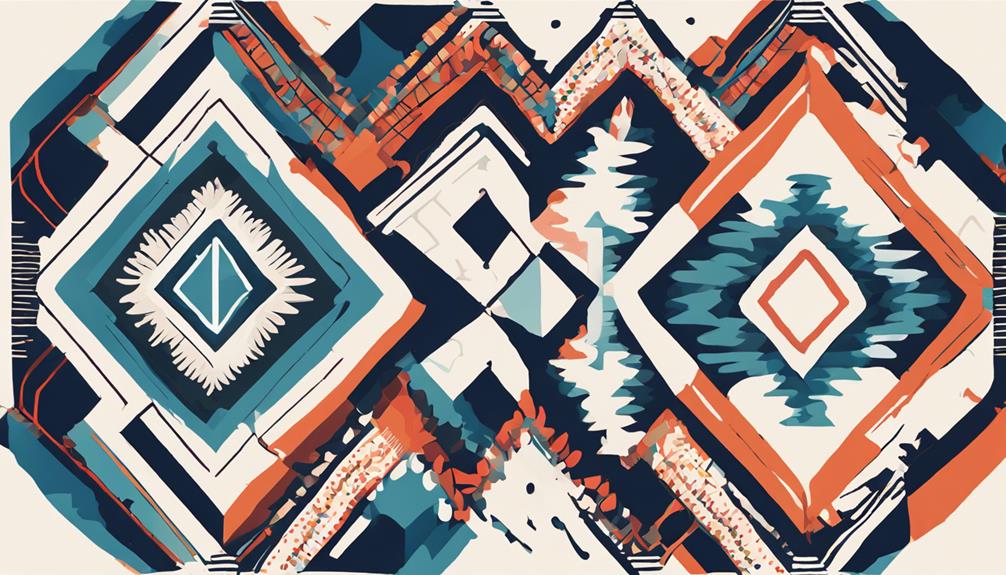
When comparing textile art books for inspiration, this book stands out as a top choice for fabric art enthusiasts. It's preferred over others by the same author, making it a recommended starting point for those interested in exploring fabric art techniques.
The book is acknowledged for its potential to inspire and complement workshops in textile art, offering a wide range of projects to try. With clear directions and techniques, it's described as an indispensable reference for upcycling textiles, providing easy-to-follow methods for altering fabric surfaces.
The book's illustrations aren't only clear but also spark creativity and innovation, making it a valuable resource for both beginners and experienced artists. For those looking to explore textile art, starting with this book can set a solid foundation and ignite a passion for fabric artistry.
Techniques and Creativity
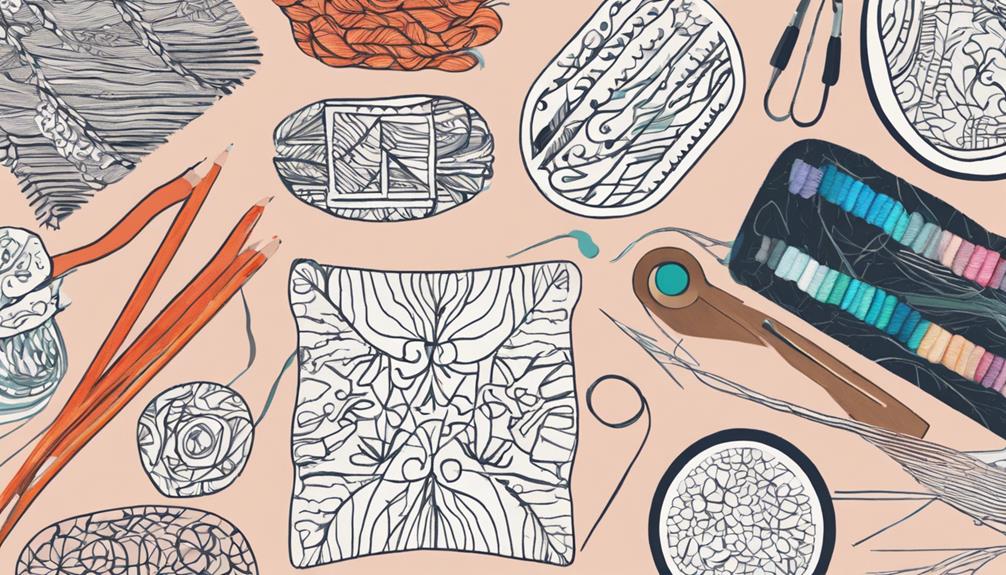
The exploration of textile art techniques and creativity in altering fabric surfaces is a cornerstone of fabric artistry. In this extensive resource, you'll find a variety of techniques well described to inspire creativity and innovation in fabric art.
Here's what you can expect:
- Step-by-step instructions: The focus is on providing clear explanations and tips for altering and embellishing fabric through various methods.
- Sourcing suggestions: Discover where to find the necessary materials and tools to enhance your fabric art projects.
- Explore and experiment: This art form encourages you to step out of your comfort zone and try new techniques to open up your creativity.
- Tips and project ideas: Whether you're a novice or an expert, you'll find a wealth of suggestions to help you enhance your creativity and create unique fabric art pieces.
Frequently Asked Questions
What Is a Textile Art?
Textile art involves using various techniques like weaving, knitting, and embroidery to create pieces that range from traditional to contemporary.
Artists explore color, texture, and form through textiles, which offer unique opportunities for artistic expression.
With a rich history dating back thousands of years, textile art continues to evolve as artists innovate and push boundaries.
Anni Albers and Ann Sutton are among contemporary artists blurring the lines between art and craft with innovative pieces.
Is Textile Art and Fiber Art the Same Thing?
When you think about the distinction between textile art and fiber art, it's like comparing a broad canvas to a specific brushstroke.
Textile art encompasses a wider spectrum, incorporating various materials beyond traditional fibers. While fiber art focuses on yarn and fabric, textile art embraces everything from paper to metal.
Textile art's versatility allows for a more diverse range of techniques and materials, pushing the boundaries beyond traditional fiber art practices.
What Are the Features of Textile Art?
Textile art features a diverse range of techniques like weaving, embroidery, quilting, knitting, and surface design. Through these methods, artists express themselves using color, texture, pattern, and form. Themes explored in textile art include identity, culture, history, and social issues.
Both traditional and contemporary approaches exist, blending craft with fine art and pushing boundaries in creative expression. These characteristics make textile art a versatile and impactful form of artistic communication.
How to Make a Textile Artwork?
To make a textile artwork, you can start by selecting your materials like fabric, yarn, or thread.
Next, you can choose a technique such as stitching, weaving, dyeing, quilting, or embroidery.
Experiment with different textures, colors, and patterns to create a unique piece that expresses your creativity.
Don't be afraid to mix and match techniques to achieve the desired effect.
Let your imagination run wild as you explore the world of textile art!
Conclusion
To sum up, textile art is a vibrant and dynamic medium that allows for endless creativity and expression.
As the saying goes, 'Art isn't what you see, but what you make others see.'
So go ahead, pick up a needle and thread, explore different techniques, and let your imagination run wild.
The world of textile art is waiting for you to create something truly unique and beautiful.
Let your creativity soar!

